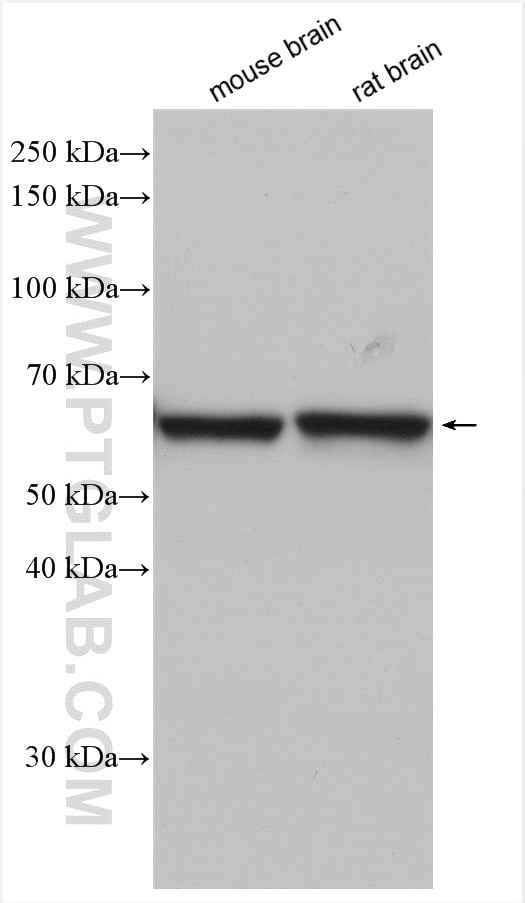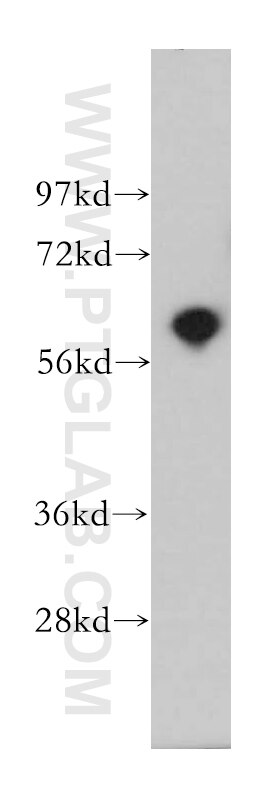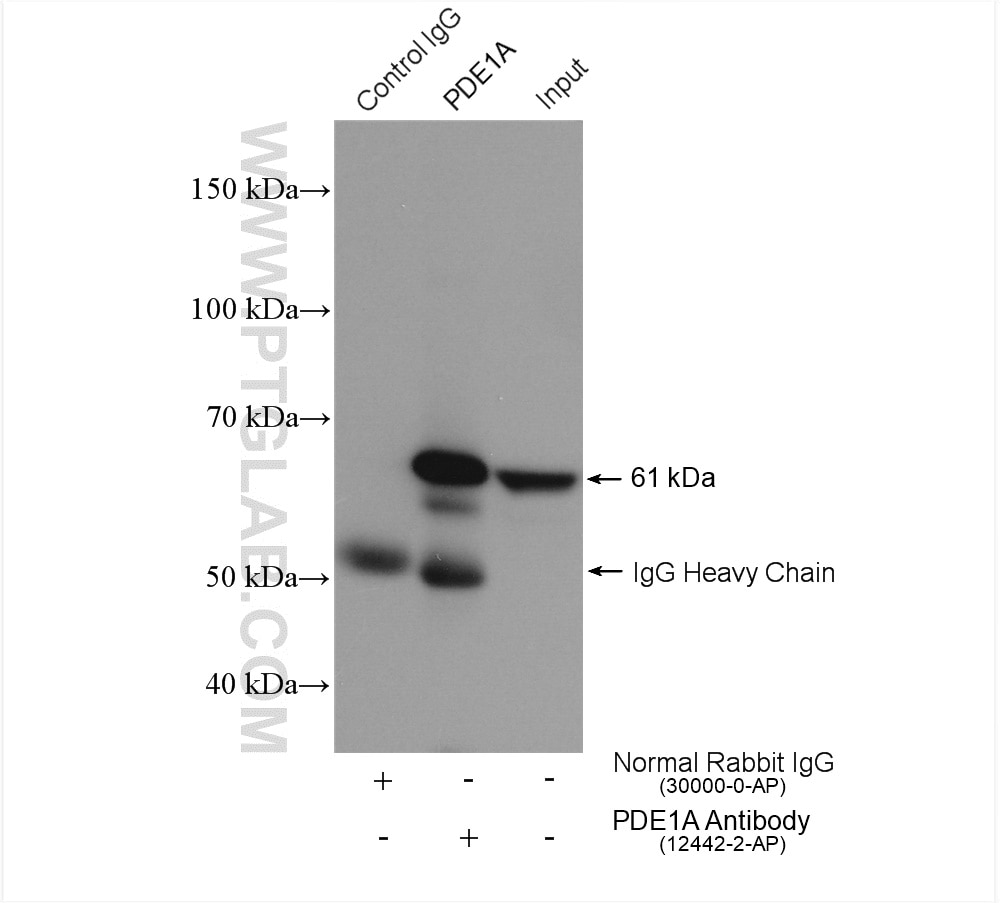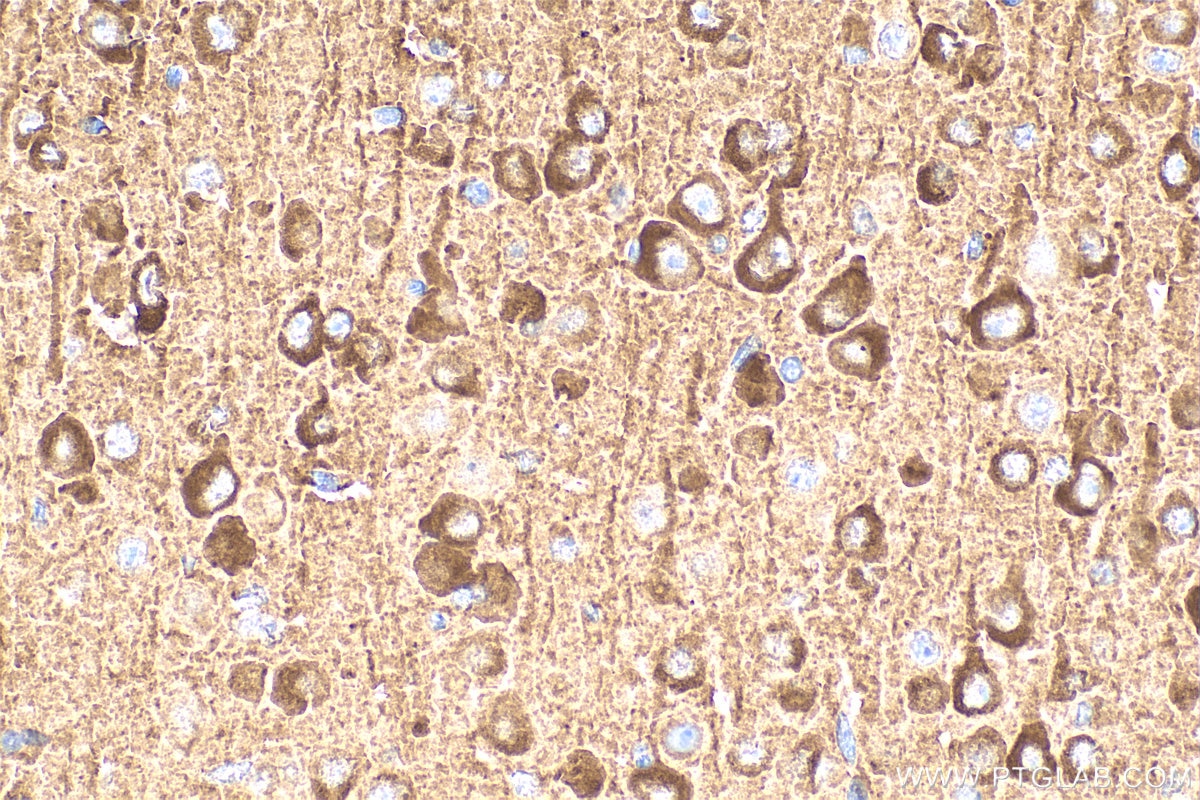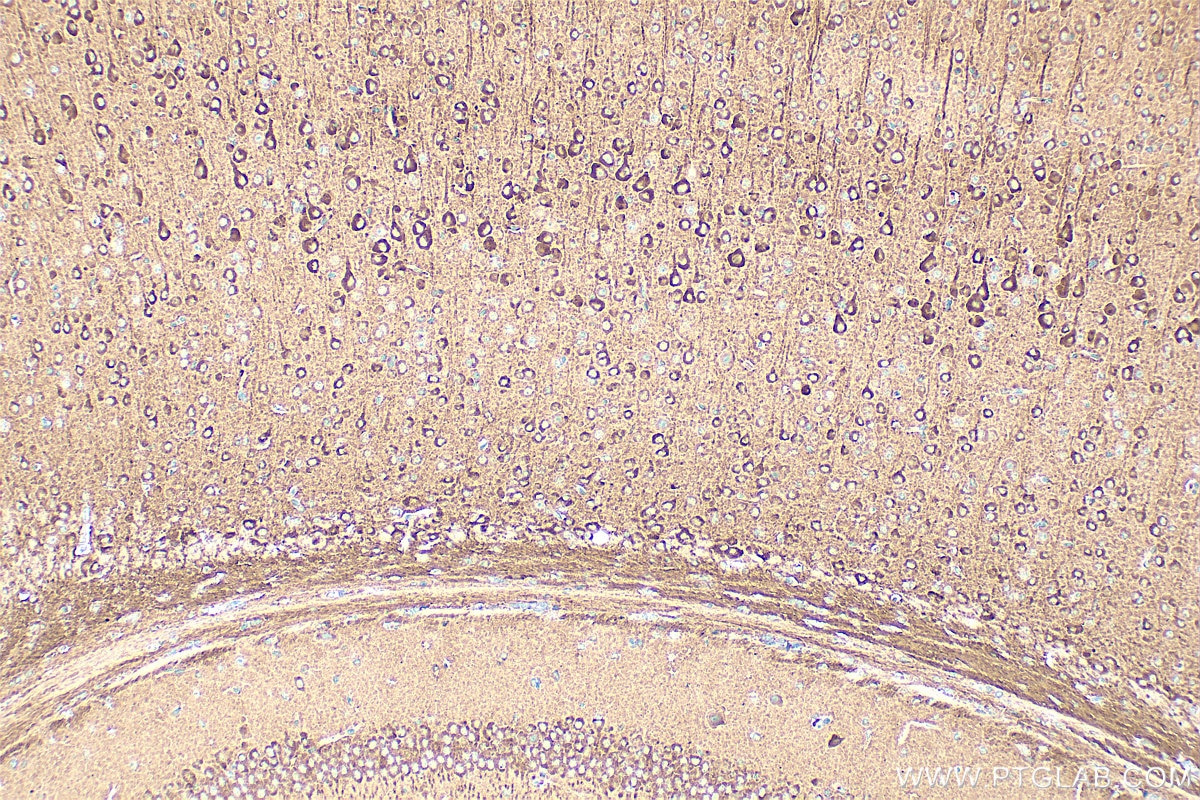Validation Data Gallery
Tested Applications
| Positive WB detected in | mouse brain tissue, human brain tissue, rat brain tissue |
| Positive IP detected in | mouse brain tissue |
| Positive IHC detected in | mouse brain tissue Note: suggested antigen retrieval with TE buffer pH 9.0; (*) Alternatively, antigen retrieval may be performed with citrate buffer pH 6.0 |
Recommended dilution
| Application | Dilution |
|---|---|
| Western Blot (WB) | WB : 1:1000-1:6000 |
| Immunoprecipitation (IP) | IP : 0.5-4.0 ug for 1.0-3.0 mg of total protein lysate |
| Immunohistochemistry (IHC) | IHC : 1:200-1:800 |
| It is recommended that this reagent should be titrated in each testing system to obtain optimal results. | |
| Sample-dependent, Check data in validation data gallery. | |
Published Applications
| KD/KO | See 1 publications below |
| WB | See 3 publications below |
| IHC | See 1 publications below |
Product Information
12442-2-AP targets PDE1A in WB, IHC, IP, ELISA applications and shows reactivity with human, mouse, rat samples.
| Tested Reactivity | human, mouse, rat |
| Cited Reactivity | human, mouse |
| Host / Isotype | Rabbit / IgG |
| Class | Polyclonal |
| Type | Antibody |
| Immunogen |
CatNo: Ag3157 Product name: Recombinant human PDE1A protein Source: e coli.-derived, PGEX-4T Tag: GST Domain: 185-545 aa of BC022480 Sequence: TRYDLINRFKIPVSCLITFAEALEVGYSKYKNPYHNLIHAADVTQTVHYIMLHTGIMHWLTELEILAMVFAAAIHDYEHTGTTNNFHIQTRSDVAILYNDRSVLENHHVSAAYRLMQEEEMNILINLSKDDWRDLRNLVIEMVLSTDMSGHFQQIKNIRNSLQQPEGIDRAKTMSLILHAADISHPAKSWKLHYRWTMALMEEFFLQGDKEAELGLPFSPLCDRKSTMVAQSQIGFIDFIVEPTFSLLTDSTEKIVIPLIEEASKAETSSYVASSSTTIVGLHIADALRRSNTKGSMSDGSYSPDYSLAAVDLKSFKNNLVDIIQQNKERWKELAAQGESDLHKNSEDLVNAEEKHDETHS 相同性解析による交差性が予測される生物種 |
| Full Name | phosphodiesterase 1A, calmodulin-dependent |
| Calculated molecular weight | 545 aa, 61 kDa |
| Observed molecular weight | 61 kDa |
| GenBank accession number | BC022480 |
| Gene Symbol | PDE1A |
| Gene ID (NCBI) | 5136 |
| RRID | AB_2162893 |
| Conjugate | Unconjugated |
| Form | |
| Form | Liquid |
| Purification Method | Antigen affinity purification |
| UNIPROT ID | P54750 |
| Storage Buffer | PBS with 0.02% sodium azide and 50% glycerol{{ptg:BufferTemp}}7.3 |
| Storage Conditions | Store at -20°C. Stable for one year after shipment. Aliquoting is unnecessary for -20oC storage. |
Background Information
PDE1A(Calcium/calmodulin-dependent 3',5'-cyclic nucleotide phosphodiesterase 1A) is also named as Cam-PDE 1A, 61 kDa Cam-PDE, hCam-1 and belongs to the cyclic nucleotide phosphodiesterase (PDEs) family. The PDEs play a role in signal transduction by regulating intracellular cyclic nucleotide concentrations through hydrolysis of cAMP and/or cGMP to their respective nucleoside 5-prime monophosphates. This protein has 9 isoforms produced by alternative splicing with the molecular weight from 57 kDa to 63 kDa. There is a report showing the major 67-kD PDE1A isoform identified in human sperm associates tightly with calmodulin and is not activated by Ca(2+)/calmodulin(PMID:12135876).
Protocols
| Product Specific Protocols | |
|---|---|
| IHC protocol for PDE1A antibody 12442-2-AP | Download protocol |
| IP protocol for PDE1A antibody 12442-2-AP | Download protocol |
| WB protocol for PDE1A antibody 12442-2-AP | Download protocol |
| Standard Protocols | |
|---|---|
| Click here to view our Standard Protocols |
Publications
| Species | Application | Title |
|---|---|---|
Biol Reprod Luteinizing Hormone Causes Phosphorylation and Activation of the cGMP Phosphodiesterase PDE5 in Rat Ovarian Follicles, Contributing, Together with PDE1 Activity, to the Resumption of Meiosis. | ||
Biol Reprod Follicle-stimulating hormone and luteinizing hormone increase Ca2+ in the granulosa cells of mouse ovarian follicles†. | ||
Cell Rep Single-Cell Analysis of Foxp1-Driven Mechanisms Essential for Striatal Development. | ||
Front Genet Transcriptome profiling of intact bowel wall reveals that PDE1A and SEMA3D are possible markers with roles in enteric smooth muscle apoptosis, proliferative disorders, and dysautonomia in Crohn's disease | ||
Mol Cancer Therapy-induced senescence is a transient drug resistance mechanism in breast cancer |

